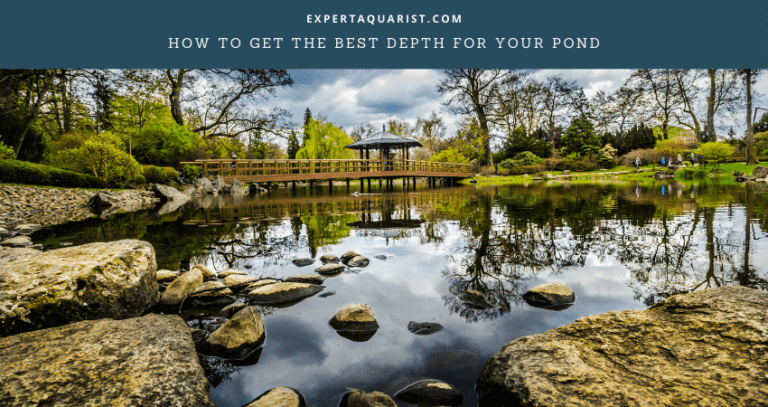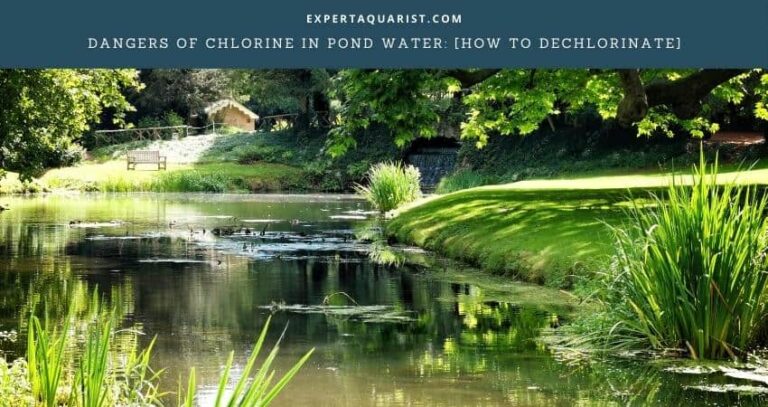There are very few landscaping options more serene and beautiful than a pond. Depending on your budget and preferences, you can install a small pond or one the size of a swimming pool. Regardless of the size, however, there’s one thing they all have in common – you will have to clean them from time to time.
However, if you’re not a landscaping professional, it may seem like the only way to properly clean the pond is to drain it, clean it, and then re-fill it – something most people are not willing to do. That’s why we reached out to Pacific Dreamscapes to ask about their process of cleaning backyard ponds without draining them.
Why Not Just Drain the System
The pond in your backyard is more likely than not home to a variety of plants, algae, and fish. All of them need clean water to thrive. However, what you and I consider clean water doesn’t always correspond to what the best water is for your pond.
In fact, it is recommended by pond professionals that you don’t drain the pond and never substitute large amounts of water at once. The ecosystem which develops in your pond requires a certain balance of nutrients and water composition. This balance is maintained largely, independent of human intervention, by bacteria and other inhabitants of the pond.
However, from time to time, your intervention will prevent bigger problems and noxious smells from building up as bacteria break down organic matter.
If you really need to drain the pond for some reasons then check out this guide.
Start with a Pool Skimmer
 If you’re not supposed to intervene too much, you may be wondering what you are supposed to do. To some degree, caring for a pond is similar to caring for a swimming pool. Your cleaning should start with removing the debris floating on the top of the pool. Typically, that is leaves and similar organic matter.
If you’re not supposed to intervene too much, you may be wondering what you are supposed to do. To some degree, caring for a pond is similar to caring for a swimming pool. Your cleaning should start with removing the debris floating on the top of the pool. Typically, that is leaves and similar organic matter.
If you do not remove it, it will drop to the bottom, be dissolved by bacteria and contribute to the buildup of sludge, meaning you will have to clean your pond again much sooner.
A simple pond skimming net with a fine mesh and a shallow basket will work best, but if you are keen on a more automated solution, you can deploy an automated skimmer. Most professionals agree that smaller ponds can easily be kept clean with a net, whereas larger ponds can benefit from having an automated solution.
Vacuuming the Sludge
If you notice a buildup of sludge despite skimming, it is time to vacuum the bottom and the sides of the pond. Removing the majority of sludge is important before the winter in order to ensure that your fish have a safe and clean environment to spend the hibernation period.
At this point, most people feel like draining all of the water would make the whole process a lot simpler. However, the nitrogen cycle in your pond is very delicate and the entire ecosystem depends on as little disruption of this cycle as possible.
Removing the muck by hand, using a rake or a net may require draining the pond. However, if you’re not keen on draining the water, there is a very effective method – use a pool vacuum cleaner. Your pond is not unlike a pool, which means that a decent water vacuum cleaner can help you.
Keeping Your Pond Clean For Longer
You’ve probably heard the old adage, prevention is better than the cure. This applies pretty well to pond maintenance, too. In order to reduce the need for frequent cleaning, there are a few things you can do with your pond.
First and foremost, do not change the water in the pond all at once – the delicate balance of nutrients is naturally maintained by the inhabitants of the ecosystem. However, if you want to help the system, you can add some beneficial bacteria that prevent the buildup of sludge. There are commercially available products which contain said bacteria.
Another aspect of your pond that you need to keep a close eye on are algae. Whereas some smaller amount of algae growth is beneficial for the pond, an out-of-control algal bloom is certain to harm the rest of the ecosystem and contribute to the buildup of sludge as they decay. A simple UV clarifier can control the population of algae in your pond, killing any excess algae while not completely eradicating their population.
Finally, make sure that your water filtration system is optimized and cleaned. For the most part, the filtration systems in ponds don’t require much maintenance, as they’re mostly self-regulating. However, there are a few things you can do. For instance, making sure that the filters aren’t overwhelmed with macro-debris or damaged.
For the most part, ponds are a self-sustained and stable ecosystem that can be a centerpiece of your backyard landscaping, but you need to know a bit more about it and learn how to help it when required.






